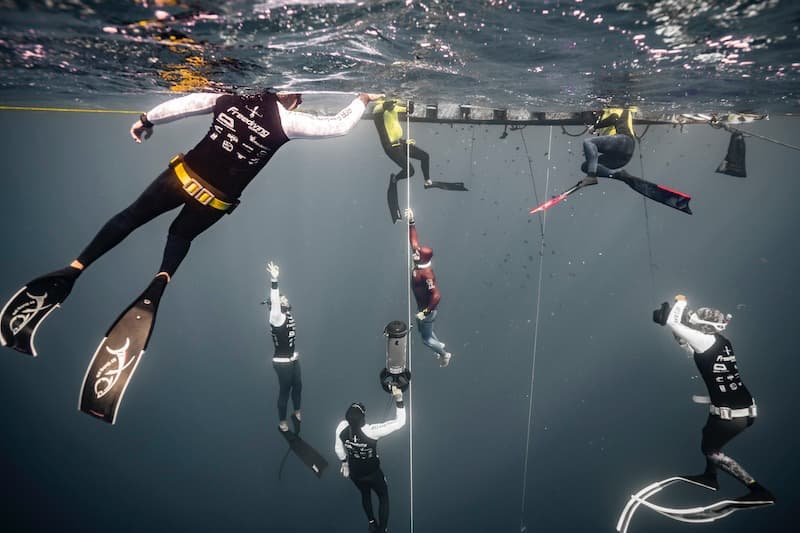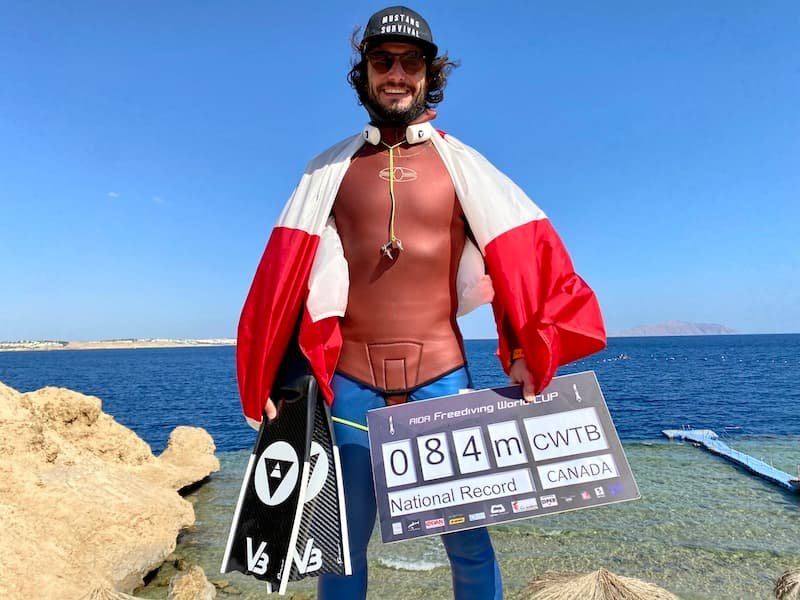
 Nick Pelios
Freediver, Creator
Nick Pelios
Freediver, Creator

 Nick Pelios
Freediver, Creator
Nick Pelios
Freediver, Creator
In freediving, performance is often measured by depth, time, and form. But underlying every successful dive is an invisible variable that governs safety, endurance, and recovery: blood oxygen saturation. Understanding how oxygen is carried, consumed, and conserved in your body can radically alter your approach to training and diving. In this article, we will take a scientific deep dive into how blood oxygen levels correlate with freediving performance, recovery, and risk.
Oxygen saturation, or SpO2, represents the percentage of hemoglobin in your blood that is bound with oxygen. For freedivers, this metric is more than just a number on a device, it is a silent indicator of how well your body copes with apnea. At rest, most people register oxygen saturation levels between 96 and 99 percent. But during a dive, as oxygen is gradually consumed and not replenished through breathing, this number begins to fall. Understanding the rate and extent of that drop reveals a great deal about your physical conditioning, your adaptation to hypoxia, and your susceptibility to blackout. In elite freedivers, SpO2 may fall below 60 percent without incident, while others may experience hypoxic symptoms above 75 percent. This variability underscores why blood oxygen monitoring is not about absolute thresholds, but about individual baselines and trends over time.
At the core of blood oxygen dynamics is the oxyhemoglobin dissociation curve, a sigmoidal relationship between the partial pressure of oxygen (PaO2) and hemoglobin saturation. The curve’s steep lower portion is particularly relevant to freediving. As PaO2 falls during a dive, the hemoglobin releases oxygen more readily to supply tissues, especially in metabolically active regions like the brain and muscles. But this release accelerates rapidly at lower PaO2 levels, creating a tipping point where a small further decline can lead to loss of motor control or consciousness. What’s more, this risk increases during ascent, when pressure drops reduce PaO2 even further, despite the diver being closer to the surface. It’s why most blackouts happen not at depth, but in the final few meters of a dive. Understanding the shape of this curve and where your personal physiology sits on it can be the difference between a controlled dive and an unexpected emergency.

Trained freedivers undergo physiological changes that profoundly alter how their bodies manage oxygen. Spleen contraction during repeated dives releases additional red blood cells, temporarily increasing hematocrit and oxygen-carrying capacity. Bradycardia and peripheral vasoconstriction reduce oxygen delivery to non-essential areas, preserving it for vital organs. Myoglobin-rich muscle tissue stores additional oxygen locally, buffering performance during hypoxic states. These adaptations collectively slow the decline in SpO2 during a dive and accelerate recovery upon surfacing. They also allow experienced divers to operate at lower oxygen saturations without symptoms. However, these same adaptations complicate simplistic interpretations of oximeter readings. Two divers might finish a dive with identical SpO2 values, yet one could be fully coherent while the other is on the edge of blackout. This is why context, recovery rate, dive profile, heart rate, and prior workload, matters as much as the number itself.
Although pulse oximeters are popular tools for dry training and post-dive monitoring, they come with significant limitations. Peripheral sensors, typically placed on the finger, are affected by temperature, motion, and peripheral vasoconstriction, especially in water. Their accuracy degrades below 70 percent, meaning readings in deeper stages of hypoxia are often approximations rather than precise data. Nevertheless, when used consistently and interpreted wisely, these tools can reveal meaningful patterns. Tracking the rate of desaturation during breath holds, the time it takes for SpO2 to recover post-dive, and the onset of urge-to-breathe in relation to saturation can all provide valuable insight. Over time, such data can help divers adjust their training, optimize recovery intervals, and monitor for signs of overreaching. The goal isn’t to chase a lower SpO2, but to understand how your unique physiology reacts under pressure and to learn what safe performance looks like in your own body.

Perhaps the most critical application of blood oxygen monitoring in freediving is risk management. Loss of motor control and blackouts are not just inconvenient, they are dangerous, especially if they occur unobserved. Since PaO2 drops steeply during ascent, divers need to surface with a sufficient oxygen buffer to withstand that final pressure change. This means understanding how low your SpO2 can safely go, how long you can remain at depth without impairing recovery, and how quickly your system bounces back once breathing resumes. Blood oxygen doesn’t just reflect endurance, it signals readiness, fatigue, and resilience. When interpreted correctly, it becomes a roadmap to safer, more intelligent training. It reminds us that freediving is not just a test of how deep you can go, but how well you can return.